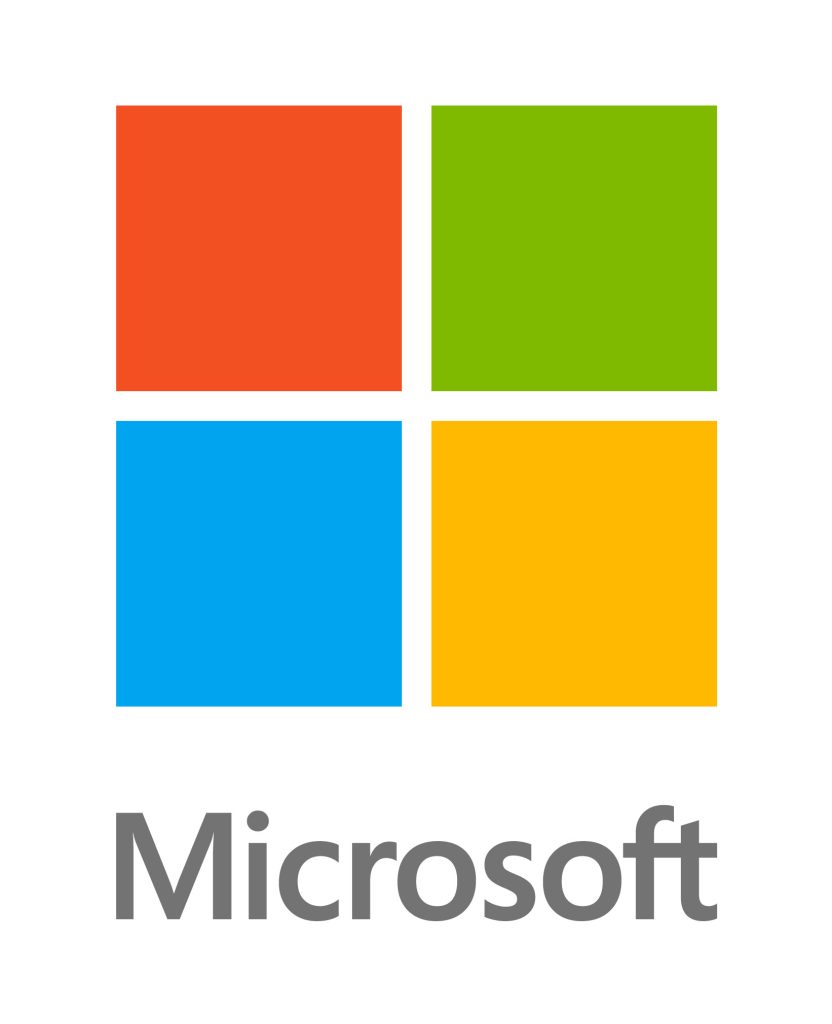Microsoft 365 as a Complete Cyber Security Solution for Australian Businesses – Why this matters now.
Australian organisations—especially SMBs—are operating in a heightened threat environment marked by frequent phishing, ransomware and data‑theft campaigns, and the Federal Government has set clearer expectations to lift baseline cyber hygiene. The 2023–2030 Australian Cyber Security Strategy lays out six “cyber shields” that prioritise strengthening businesses and citizens, disrupting ransomware, and securing identities, with tangible programs and an action plan already underway—an agenda that aligns closely with Microsoft’s identity‑first, platform‑based security approach. The ACSC’s latest Annual Cyber Threat Report (2023–24) reinforces why uplift is urgent: state and criminal actors continue to adapt, targeting Australian organisations across email, web, and endpoint vectors, and seeking weaknesses in identity and configuration.
Against that backdrop, the ACSC Essential Eight remains the pragmatic benchmark for uplift. It provides a baseline set of eight mitigation strategies—Application control, Patch applications, Configure Office macro settings, User application hardening, Restrict administrative privileges, Patch operating systems, Multi‑factor authentication, and Regular backups—with a maturity model that helps organisations sequence work and measure progress. The ACSC recommends implementing the eight controls to a consistent maturity level, and updated the model in November 2023 to improve clarity for assessments. Microsoft publishes prescriptive mappings showing how Microsoft 365 controls (for example, Entra ID Conditional Access + MFA, Intune device compliance, Defender, and SharePoint/OneDrive retention & backup integrations) support each pillar, making it easier to plan, implement, and sustain maturity over time. Microsoft 365 also helps organisations address compliance requirements by mapping these controls to regulatory frameworks, making it simpler to demonstrate alignment with industry standards and reporting obligations.
Why Microsoft 365 is different: security built into identity, apps, devices and data
Unlike bolt‑on point tools, Microsoft 365’s security is architected across four planes—identity, device, data and apps—with Microsoft Secure Score guiding continual hardening from a single dashboard. That means fewer gaps, simpler operations, and measurable posture improvement. Microsoft 365 security is designed to adapt to your organization’s unique structure and policies, ensuring protection and compliance tailored to your organization’s specific needs.
1) Identity & Access: Microsoft Entra ID (formerly Azure AD – Azure Active Directory)
Identity is the new security perimeter in a cloud-first world. Attackers increasingly target credentials rather than firewalls, making strong identity controls the foundation of any cyber security strategy. Every Microsoft 365 tenant includes Microsoft Entra ID (formerly Azure Active Directory), which delivers single sign-on (SSO), multi-factor authentication (MFA), typically through the Microsoft Authenticator App, and risk-based conditional access policies. The name has changed, but the security features and licensing remain consistent—so organisations can continue to rely on familiar capabilities under the new Entra branding.
With Microsoft 365 Business Premium, you get Entra ID Plan 1 as standard. This unlocks critical features such as Conditional Access, self-service password reset, multifactor authentication and group-based access management. These controls are essential for blocking cyber threats and meeting frameworks like the ACSC Essential Eight, particularly around Microsoft MFA (multi-factor authentication) enforcement and privilege restriction. By implementing these measures, businesses can significantly reduce the risk of credential theft and unauthorised access.
Conditional Access combined with Intune compliance takes identity security a step further by enforcing context-aware policies. Access decisions can factor in role based access control, user risk level, device compliance status, geolocation, and even the specific application being accessed. This means only trusted users on compliant, managed devices, including mobile devices (mobile device management) can reach sensitive corporate resources. For example, you can block sign-ins from unmanaged devices or require MFA when a user logs in from an unfamiliar location. This dynamic, policy-driven approach ensures that security adapts to real-world conditions blocking unauthorised access without compromising productivity.
2) Device Security & Management: Microsoft Intune + Defender
Microsoft Intune gives you one control plane to standardise policy, patching, and configuration across Windows, macOS, iOS and Android, so every device that touches company data meets the same baseline. With configuration profiles, security baselines and update rings, you can harden OS settings, keep endpoints current, and deploy apps with zero‑touch onboarding (e.g., Windows Autopilot) or lightweight, app‑only management for BYO. Crucially, Intune turns device posture into a signal; it feeds compliance results into Conditional Access so users only reach corporate resources when their device meets your standards.
On the endpoint security side, Microsoft Defender for Business (included with Microsoft 365 Business Premium) delivers enterprise‑grade next‑gen protection and EDR tuned for SMBs. You get behavioural detection, automated investigation and remediation, attack‑surface reduction rules, and clear guidance in the Defender portal. For most small and midsize environments, this baseline security measures, core malware defence and day‑to‑day incident response without adding tool sprawl.
When requirements grow—think advanced hunting, longer data retention, or deeper enterprise features—you can step up to Defender for Endpoint Plan 2 (via the Microsoft 365 E5 Security add‑on). That unlocks cross‑endpoint KQL hunting, richer investigation tooling (live response, advanced containment), and extended telemetry retention to support complex investigations and regulatory expectations.
How Microsoft Intune + Defender works
- Enrol & standardise with Intune
- Enrolment options: Azure AD Join/Autopilot for corporate Windows, Apple Automated Device Enrollment for iOS/iPadOS/macOS, and Company Portal for user‑driven bring‑your‑own.
- Configuration & updates: Apply security baselines, configuration profiles, and update rings (Windows), plus macOS/iOS/Android restrictions and required apps.
- App protection (MAM): Protect corporate data in Office apps on personal devices—without enrolling the device—via conditional launch, PIN, and selective wipe.
- Gate access with Conditional Access
- Compliance as a control: Intune evaluates device health (OS version, encryption, jail‑break/root, Defender status). Conditional Access then allows, blocks, or requires step‑up (e.g., MFA) based on compliance.
- Risk‑aware policies: Combine device compliance with sign‑in risk, location, and session controls to enforce the right access for the right conditions.
- Protect & detect with Defender for Business
- Next‑gen AV + EDR: Built‑in Microsoft Defender provides real‑time protection and behavioural EDR telemetry.
- Automated response: Automated Investigation & Remediation (AIR) collects artifacts, scores risk, and can auto‑contain (e.g., isolate device, kill processes) with analyst approval.
- Exposure reduction: Use attack surface reduction rules, web protection, and device control to cut exploit paths.
- Scale up with Defender for Endpoint Plan 2 (E5 Security add‑on)
- Advanced hunting: Query endpoint—and, via Defender XDR, correlated identity/email—telemetry using KQL for proactive hunts and threat‑led investigations.
- Deeper forensics & retention: Leverage longer telemetry retention and live response to gather artifacts, run scripts, and expedite remediation at scale.
3) Email & Collaboration Defence: EOP + Defender for Office 365
Email remains the number‑one entry point for attackers because it reaches users directly and blends social engineering (business email compromise, QR‑code lures, invoice fraud) with technical exploits (malware, credential‑harvesting pages, and payload‑less phishing). To cut this risk at the front door, Exchange Online Protection (EOP) provides your always‑on baseline: connection and domain reputation checks, SPF/DKIM/DMARC enforcement, anti‑spam, anti‑phish, and zero‑hour auto purge (ZAP) to yank newly discovered threats out of inboxes after delivery. This baseline reduces noise and blocks commodity threats at internet scale, before users ever see them.
When you need stronger shields, Microsoft Defender for Office 365 Plan 1 (included with Microsoft 365 Business Premium) adds Safe Links and Safe Attachments across Exchange, SharePoint, OneDrive, and Teams. Safe Links rewrites URLs and evaluates them at time‑of‑click, neutralising malicious redirections that change after delivery. Safe Attachments detonates files in a sandbox to catch never‑before‑seen malware before it lands. As security needs grow, Plan 2 layers on Automated Investigation & Response (AIR) to contain outbreaks faster, Explorer/real‑time detections for hunting and campaign views, and Attack Simulation Training to harden users against the latest phishing techniques.
How EOP + Defender for Office 365 Works
- EOP (baseline)
- Block at connection: reputation and IP throttling reduce junk before content scanning.
- Authenticate the sender: SPF/DKIM/DMARC checks downgrade or reject spoofed mail.
- Inspect content: anti‑spam, anti‑phish heuristics, impersonation protection, and policy rules.
- Clean up post‑delivery: ZAP retroactively purges messages if they’re later found malicious.
- Defender for Office 365 Plan 1 (protection in depth)
- Safe Links: rewrites URLs and checks them again when users click, in email and Office apps/Teams chats.
- Safe Attachments: detonates files in an isolated environment; if malicious, the message/file is blocked or removed across Exchange/SharePoint/OneDrive/Teams.
- User‑facing controls: quarantine, end‑user notifications, and admin approvals for releases.
- Defender for Office 365 Plan 2 (operate at speed)
- Automated Investigation & Response (AIR): triages alerts, traces campaigns, and auto‑contains (e.g., auto‑isolate URLs, purge mail, adjust policies).
- Explorer / real‑time detections: threat hunting, campaign mapping, and remediation from a single pane.
- Attack Simulation Training: run live phishing simulations and assign micro‑trainings to lift resilience.
4) Data Security & Compliance: Microsoft Purview
Microsoft Purview Information Protection provides sensitivity labels, encryption, and Data Loss Prevention (DLP) for email and files, supporting Privacy Act compliance and preventing data breaches or data leaks. Compliance Manager streamlines these settings and monitors your compliance score—all included with Microsoft 365 Business Premium. Compliance Manager also helps your organization manage compliance requirements related to data privacy by assessing risks, adhering to regulations, and facilitating audits.
Microsoft Purview is Microsoft’s unified platform for business data security, compliance, and governance. It brings together multiple compliance solutions to help organizations meet regulatory obligations and ensure data protection. The platform enables your organization to discover, classify, protect, govern, investigate, and audit your organization’s data and sensitive information across Microsoft 365 services, endpoints, Power BI/Fabric, and third-party apps, using automated, policy-based controls. Purview enables users to locate and manage the organization’s data assets, including contacts, through the Unified Catalog for improved data discovery and organization. Microsoft Purview Data Lifecycle Management, formerly known as Microsoft Information Governance, provides tools for content retention, deletion, and compliance to help manage your organization’s data effectively. Privileged access management is also available to provide granular control over privileged admin tasks and enhance security. Simply: know, protect, govern, and validate your sensitive data.
Microsoft Purview combines –
- Information Protection (sensitivity labels & encryption)
- Microsoft Data Loss Prevention (DLP) across cloud services, endpoints, and network
- Data Lifecycle & Records Management (retention/records)
- eDiscovery export electronic data for legal, regulatory or investigative purposes—all without moving it out of Microsoft 365.
- Insider Risk Management & Communication Compliance
- Audit (Standard/Premium)
All featured in the Microsoft Purview portal.
5) Posture Management & Visibility: Microsoft Secure Score
Microsoft Secure Score is a quantitative measure of your organisation’s security posture across Microsoft 365 and related services. It’s expressed as a number (and percentage) in the Microsoft Defender portal, with a higher score indicating that more recommended security actions have been implemented. It is ideal for board, industry and audit reporting.
How Microsoft Secure Score Works
- Configuring recommended security features (e.g., enabling MFA (multi-factor authentication), setting Conditional Access policies).
- Performing security-related tasks (e.g., reviewing reports, applying updates).
- Addressing risks with non-Microsoft solutions (you can mark actions as “mitigated by third-party” and still get credit).
Some actions give partial points if applied to only part of your environment (e.g., MFA for some users). If you can’t implement an action, you can accept the risk so it’s documented.
6) AI Assistance for Security Teams: Microsoft Copilot for Security
For organisations with in‑house security or an MSSP partner, Microsoft Co-pilot for Security is a generative‑AI assistant for defenders that sits across your security stack to summarise incidents, hunt threats, generate KQL, recommend next steps, and automate routine SOC work—all in natural language. It’s available as a standalone experience and embedded inside Microsoft security products. Out of the box it integrates with Microsoft Defender XDR, Microsoft Sentinel, Microsoft Entra, Microsoft Intune, and selected third‑party tools all in the one location.
How Microsoft Co-pilot for Security Works
- Natural-language prompting: Analysts ask questions in plain English; Copilot assembles context from connected products and plugins, then responds with reasoning, steps, or KQL you can run.
- Plugin model: Copilot uses security‑specific plugins (Microsoft and third‑party) to ingest context and take scoped actions; Microsoft publishes guidance and sample plugins for extensibility.
- Where it lives: Use it in the standalone Security Copilot portal (broadest cross‑product view) and within consoles like Defender XDR and Sentinel for in‑flow assistance.
7) Cloud App Security: Microsoft Defender for Cloud Apps
How Microsoft Defender for Cloud Apps Protects Your SaaS Environment
Microsoft Defender for Cloud Apps acts as a powerful cloud access security broker (CASB), delivering complete visibility and control over your organization’s cloud apps. As businesses increasingly rely on cloud services, the risk of data exposure, malicious links, and unauthorized access grows. Defender for Cloud Apps helps protect your data by continuously monitoring cloud app usage, privileged tasks, identifying risky behaviours, and enforcing security policies in real time.
With advanced data loss prevention (DLP) and threat protection capabilities, Microsoft Defender for Cloud Apps enables organizations to detect and block threats such as gaining unauthorized access, data exfiltration, and the use of unsanctioned apps. Integrated with Microsoft Defender and the broader Microsoft 365 security ecosystem, it provides seamless access management and compliance features, ensuring that only authorized users can access sensitive information.
8) Insider Risk Management: Proactively Detecting and Mitigating Internal Threats
Microsoft 365 Tools for Insider Risk Management
Insider risks—whether accidental or malicious—pose a significant threat to an organization’s sensitive information and compliance posture. Microsoft 365 addresses this challenge with a comprehensive suite of insider risk management tools, led by Microsoft Purview. With advanced analytics and machine learning, Microsoft Purview helps organizations govern data and proactively identify potential insider risks before they escalate.
9) Microsoft Teams Security: Protecting Collaboration and Communication
Key Security Features for Teams in Microsoft 365
Microsoft Teams is at the heart of modern business collaboration, and with its deep integration into Microsoft 365, it delivers robust security features to protect your organization’s communication, files, and business-class email. Teams leverages Microsoft Defender to provide extended detection and response, helping to identify and neutralize threats such as phishing, malware, and unauthorized access in real time.
Office 365 – Data residency in Australia
Microsoft 365 stores customer data at rest in your tenant’s geography; Australia is a supported geo with expanded coverage across workloads (and Advanced Data Residency is available for stricter commitments). This helps align with sovereignty expectations and enterprise mobility while still benefiting from Microsoft’s global threat intelligence and cloud environments.
How PIP operationalises Microsoft 365 security for SMBs
PIP delivers fully managed Microsoft 365 solutions that go beyond basic deployment to embed end-to-end security controls aligned with industry best practice and the ACSC Essential Eight. Our service includes identity protection with Entra ID (MFA, Conditional Access, privilege restriction), device compliance and patching via Intune, and enterprise-grade endpoint security through Defender for Business. We implement email and collaboration safeguards with Exchange Online Protection and Defender for Office 365, and enforce data security and compliance using Microsoft Purview for sensitivity labelling, DLP, retention and audit. PIP helps organizations manage their Microsoft 365 security and compliance environment by overseeing and organizing security policies, user access, and data governance tools to maintain operational efficiency and compliance. Every engagement starts with a tenant security baseline and Secure Score roadmap, followed by continuous monitoring, monthly reporting, and optional advanced capabilities such as Defender for Endpoint Plan 2 and Co-pilot for Security—ensuring clients achieve measurable, sustainable cyber resilience without the complexity of managing multiple tools.
A practical, staged roadmap (what we implement)
Stage 1 — Foundation (Weeks 1–2)
- Tenant security baseline: Admin role hygiene, MFA enforced, modern auth only, secure defaults/pre-set policies for EOP/Defender, initial Secure Score improvement plan. These security controls are applied at the tenant level by default, affecting all users in the organization.
- Identity hardening: Conditional Access templates (block legacy auth, require compliant devices for privileged roles, location/risk‑based access).
- Email protection: EOP tightened, Defender for Office 365 P1 controls (Safe Links/Attachments) rolled out; phishing simulation optional (P2 if required).
Stage 2 — Device & data control (Weeks 2–5)
- Intune: Device compliance policies, update rings, app protection (for BYOD), autopilot/enrolment for new devices.
- Defender for Business: EDR and automated remediation on endpoints; optional uplift to Defender for Endpoint P2 (via E5 Security add‑on) as needs grow. Endpoints are protected against threats such as malware, ransomware, and insider risks.
- Purview information protection: Sensitivity labels, DLP for Exchange/SharePoint/OneDrive, encryption policies for sensitive mail.
Stage 3 — Compliance & continual improvement (Weeks 5–8)
- Compliance Manager onboarding; policy/risk tracking with artefacts for ISO/Privacy Act alignment, with thorough documentation maintained to support compliance and audit processes.
- Secure Score targets embedded in monthly service reviews; dashboards for executives.
- Optional: Copilot for Security pilot for faster investigations; scale by SCU as volume grows.
Your Business Security Outcomes.
- Substantially reduced credential & anti phishing protection through MFA, CA, Safe Links/Attachments and user training powered by Defender for Office 365.
- Measured posture improvement with Secure Score—boards see before/after progress and a living backlog of next actions.
- Data protection by default via Purview sensitivity labels and DLP across mail and files, supporting Australian privacy expectations.
- Operational simplicity (one ecosystem) and cost control (only add E5 Security when you need advanced hunting/automation).
- Australian data residency options for sensitive workloads via Microsoft’s AU data locations and ADR add‑on.
Ready to Secure Your Organisation ?
Ask us for an Onsite Assessment & Audit to baseline your Companies Cyber Security stance, identity posture, best practices and email/data controls—then we’ll present a 60–90 day uplift plan aligned to the ASD Essential Eight. If you need technical assistance or have specific issues with Microsoft Purview or other Microsoft 365 security solutions, you can contact support via email or telephone. You can also check out our Comparison of Plans for Microsoft 365 to see what Plan is right for your business and its security.
After exploring available resources, you can select ‘Contact support’ to obtain personalized assistance from a Microsoft support agent.






